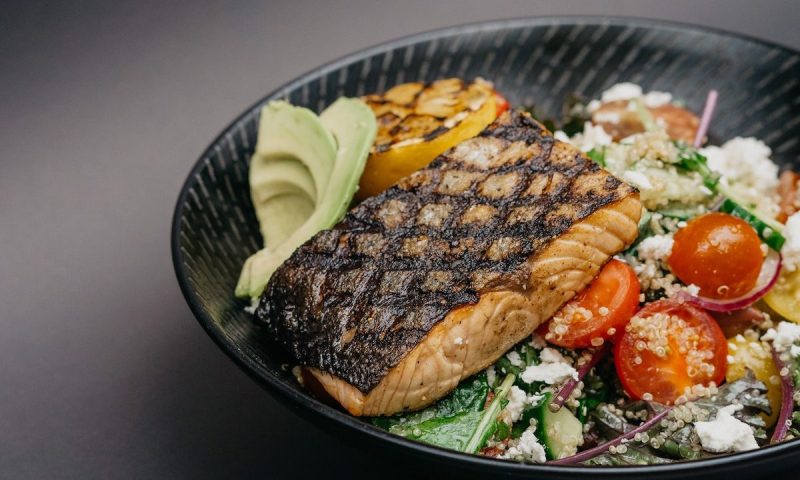
Fish isn’t always the first ingredient that comes to mind when planning a dinner hot off the grill. We tend to gravitate more toward the classics; burgers, chicken, steak, and brats. And while seafood is wildly popular, it can sometimes seem a little bit intimidating to cook at home. After all, fish can be a touch delicate. The process isn’t exactly slapping a huge chunk of meat and bones on the coals and letting the fire have its way. Cooking fish takes a lighter, more tender touch.
So let’s explore the gentler side of grilling. With our guide to grilling fish, seafood will drastically climb in the ranks of meats you want to grill. Grilled fish is not only delicious, but it’s also good for you, delivering a dose of healthy fats and proteins.
We sought out advice from executive chefs Josh Carter and Michael Cimarusti for some expert tips on how to get grilled fish right every time.
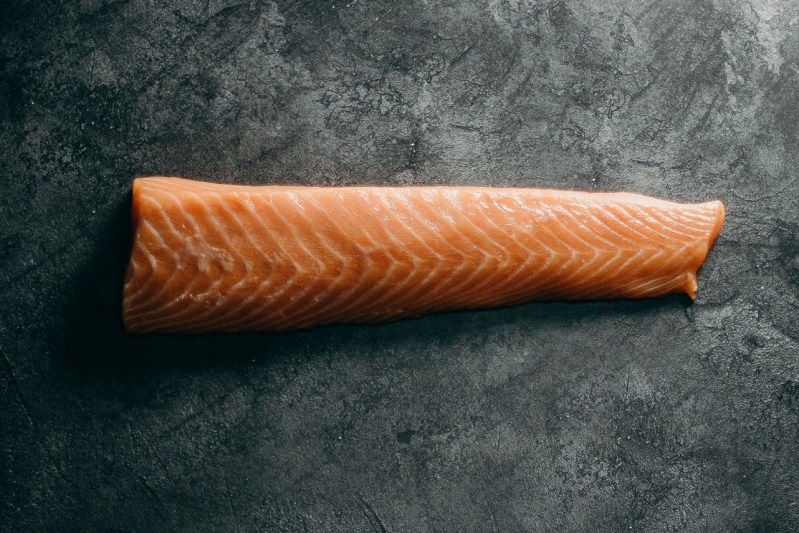
Select the right fish
Although most fish is delicious, not every type is right for grilling. Fattier fish like salmon, swordfish, tuna, mackerel, and trout tend to hold their moisture better and are great for grilling. Leaner fish like monkfish, branzino, snapper, and halibut also grill well because of the density of their meat. Whichever type you prefer, try to go with a thick-cut filet that will hold up better to high temperatures.
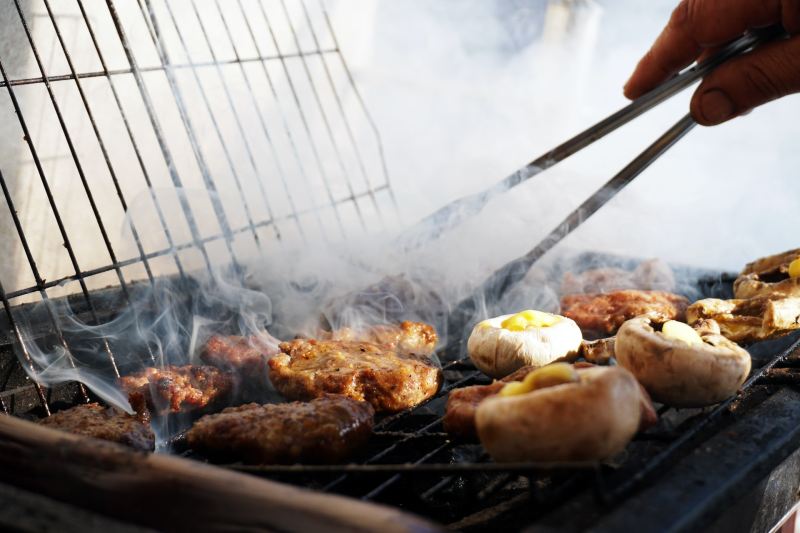
Have the right tools
Before you start grilling, you’re going to need the right grilling accessories. After you fire up the grill, have your grill brush ready and give the grates a hard scrub down to ensure the grill is clean. You don’t want any old, burnt food sticking to your fish. You’ll also want a flexible fish spatula to maneuver under the fish and flip it. Stay away from tongs, as they will very likely cause your beautiful filet to crack and crumble. Depending on the fish or the recipe, it’s good to have some heavy-duty foil available.
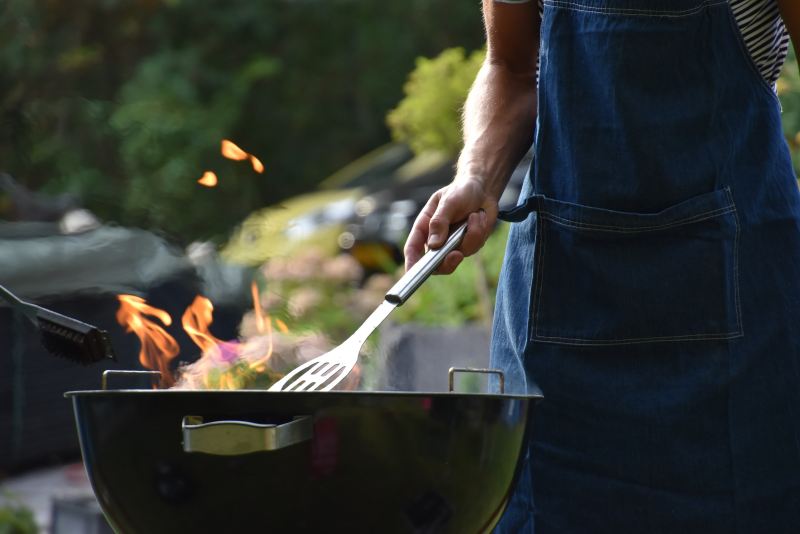
Tips for how to grill fish – according to Chef Carter
- Thoroughly clean, then light the grill and turn to full flame to get it hot while prepping the fish.
- Make sure the grill is plenty hot. A good minimum temperature is 300 degrees Fahrenheit. You want it high enough to cook the fish thoroughly, but not so high as to cook it too quickly and dry the fish out.
- Depending on the fish, you’ll need to filet or descale or score the skin.
- If you’re grilling whole fish, most likely the fish will come from a market, in which case the scales and guts should have been removed prior to purchasing. If not check out how to clean a fish.
- If you’re grilling filets with the skin on, we recommend making a small slit or two in the skin, so the fish doesn’t curl while cooking.
- Use a very light coat of olive oil to help keep the fish from sticking. However, too much oil will cause the grill flames to flare up, making the fish not so tasty.
- With skin and without, place seasoned fish on the hot grill — after about 25 seconds, turn 1/4 of an inch and cook for another 25 seconds, then flip and repeat.
- Resist the urge to move the fish too soon. If you don’t allow enough time for the fish to be seared on the grill, the fish will stick and be more difficult to handle.
- Once the fish is marked from the grill, shift to a cooler side to finish cooking.
- When the fish is at desired doneness, remove it from the grill and plate.
- Whitefish, we recommend cooking until the flesh is no longer clear and opaque in color. Tuna, we like to sear more on the rare side and slice. Salmon, we like to cook medium-rare to medium, which should be firm outside with a light spring and pink in the center of the filet.
General fish grilling tips are all well and good, but sometimes a man prefers to have things spelled out for him. If you’re the kind of fella who likes to follow a recipe, check out this awesome recipe for grilled mackerel with escalivada & toasts. This recipe is courtesy of the BBC Goodfood app, one of our recommended recipe apps to channel your inner chef.
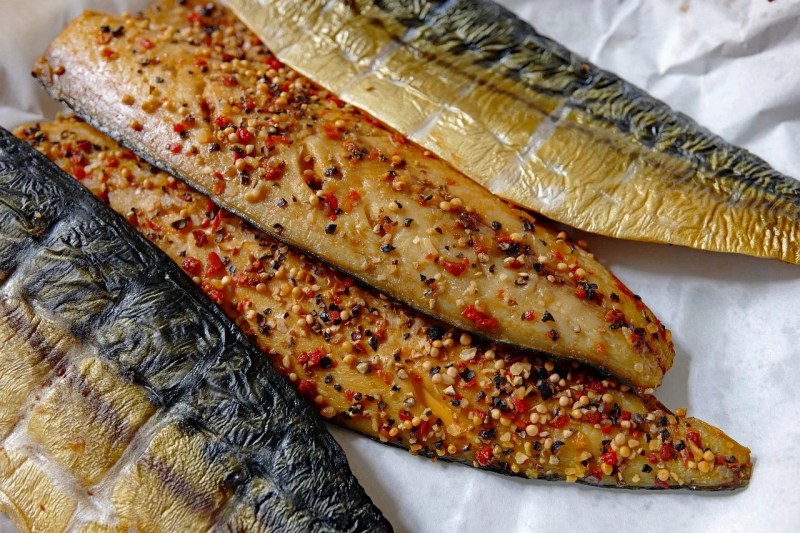
Grilled mackerel with escalivada and toasts
Ingredients:
For the escalivada: You can make and chill up to three days ahead; the flavors will intensify as it matures. Serve it warm, with the parsley folded through it.
- 3 very large or 4 medium peppers, a mix of colors
- 1 red onion, halved and thinly sliced
- 3 tablespoons extra virgin olive oil
- 2 medium eggplants
- zest 1 lemon, juice of half
- 1 rosemary sprig, finely chopped
- 2 tablespoons small capers, drained
- Small pack flat-leaf parsley, roughly chopped
For the fish and toasts:
- 2 rosemary sprigs, finely chopped
- 3 garlic cloves, crushed
- 3 tablespoons extra virgin olive oil, plus extra to serve (optional)
- 1 large olive ciabatta, cut into 8 slices
- 1/4 teaspoon chili flakes or hot paprika
- 4 mackerel fillets, pin-boned and cut in half if large (or 8 butterflied sardines)
Method:
- Heat the grill to high heat.
- Line the grill pan or a large baking tray with foil.
- Using a potato peeler, remove most of the skin from the peppers, then remove the seeds and julienne.
- Toss with the onion and 1 tablespoon of oil, then grill for 15 minutes, stirring halfway, until soft and charring here and there.
- Cut the eggplant into 1/2-inch half-moons and brush sparingly with 2 tablespoons of oil.
- Lay the slices over the peppers, season well, then grill for 5 minutes until golden.
- Turn the aubergines over, scatter with the lemon zest and rosemary, then grill for 5 minutes more until golden and soft in places.
- Stir the capers and the lemon juice into the vegetables. Season and set aside.
- For the toasts and fish, mix the rosemary, crushed garlic, oil, and some seasoning.
- Brush half of this over one side of the ciabatta slices.
- Mix the chili into the remainder, then brush over the fish and let it marinate for anything from 5 minutes to 1 hour in the fridge.
- Grill the fish, skin-side up (or barbecue skin-side down), for 4 to 5 minutes, depending on the thickness of flesh until just cooked through and the skin is crisp.
- Grill the bread until sizzling and golden.
- Top the toasts with the escalivada, followed by the fish, and serve with another drizzle oil, if you like.
Advice from Michelin-star chef Michael Cimarusti
- Before cooking, salt your fish and set it aside. After about 10 minutes, rinse the salt away. This is a way of brining your fish so the flavors are more robust after cooking.
- It’s very important to remove excess moisture from the surface of the fish by opening and closing the scales using the backside of your knife. This creates a stronger barrier for the delicate flesh of the fish, and it will help in the browning process.
- To prevent the fish skin from sticking to the grill, brush a very faint layer of mayonnaise onto the skin.
- If your fish starts to curl during the cooking process, you can use a weight to hold it down and maintain its shape.
- For more even cooking, you can cover the fish with a lid. This will evenly distribute the heat from the grill so the fish will cook more quickly and have a more enhanced flavor.
- Brushing the fish with butter while it grills is a great way to add more flavor.
- Using a cake tester to determine doneness is a great way to check the cook without disrupting the flesh of the fish.
- Once off the grill, you can brush the skin-side with butter again, ensuring an even richer flavor.
- Always allow the fish to rest after it’s been taken off the heat. This will allow it to continue cooking properly and distribute moisture evenly.

More tips and tricks for grilling fish
- Only heat one side of your grill to high heat so you can transfer fish to the low heat side after searing to finish cooking, preventing overcooking.
- Grilling baskets are great for whole fish — they make it easier to flip and cook without charring as much.
- Using cedar planks soaked in water is another good option for grilling. Lightly oil the cedar plank and place the fish on top. Place the cedar plank with the fish on the grill and close the lid. The fish will cook this way without any flipping required. (You can read more about using cedar planks here.)
- If grilling a whole fish, wrap the tail in foil to prevent burning for better presentation.
- When it comes to grilling, the skin is your friend. Most fish skin is edible, and it’s always best to start with the skin-side down to let the fish cook a little and firm up before flipping.
- Try using pre-soaked wooden skewers for shrimp and scallops. Soaking the skewers in water before attaching shrimp or scallops will allow the meat to cook without the skewers burning. The skewers will also make it easy to move your shrimp and scallops as needed.



